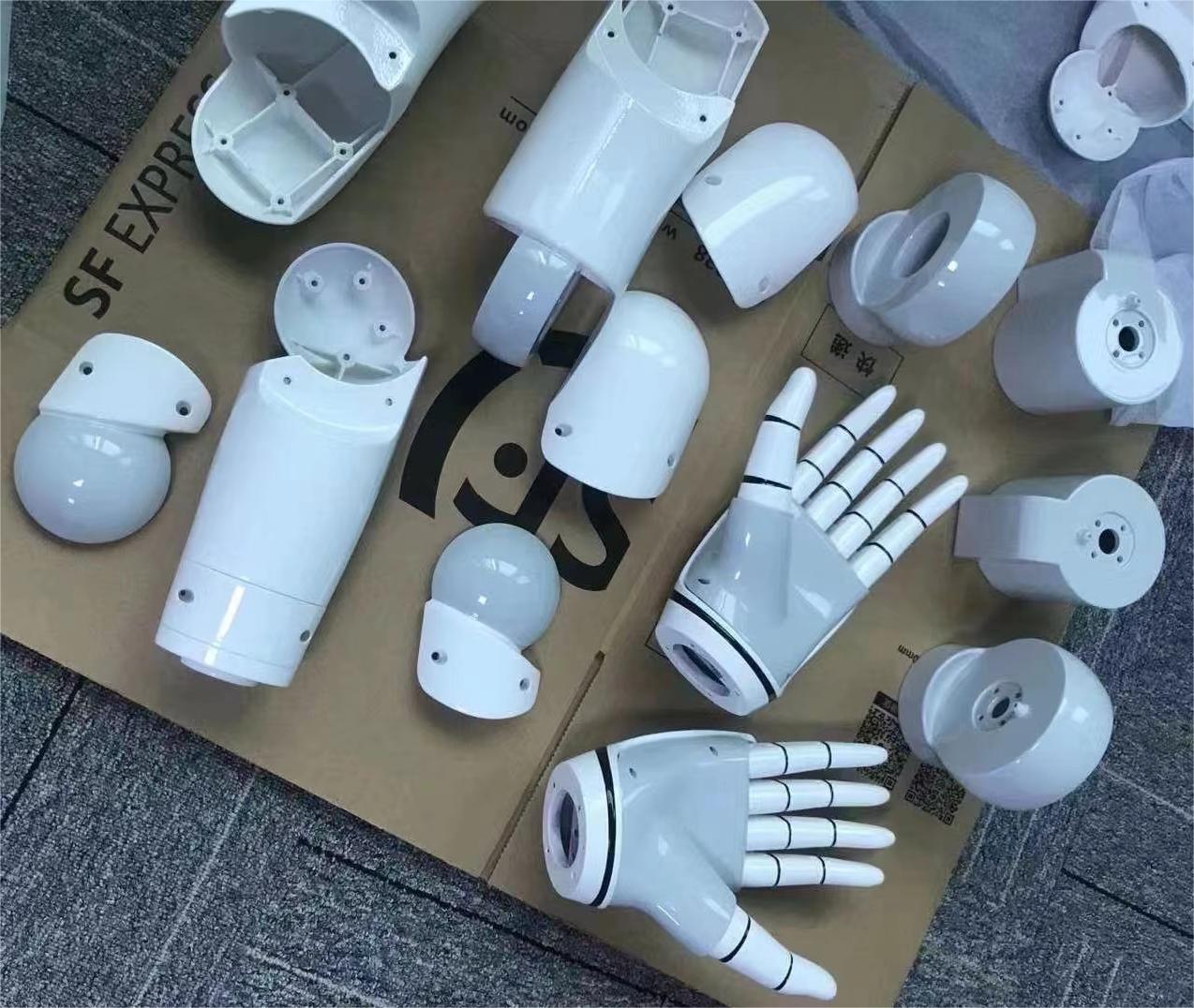Robotics and Automation
 In today's rapid socio-economic development and increasingly technological updates, robots have brought us a lot of conveniences. Robot manufacturing and assembly has also become a two-part process consisting of software and hardware. We use CNC technology to process and manufacture robot shells, parts, etc., and control machine tools through programs to accurately cut, drill, mill, turn, grind, etc., with high processing accuracy. Can reach a few tenths of a micron.
In today's rapid socio-economic development and increasingly technological updates, robots have brought us a lot of conveniences. Robot manufacturing and assembly has also become a two-part process consisting of software and hardware. We use CNC technology to process and manufacture robot shells, parts, etc., and control machine tools through programs to accurately cut, drill, mill, turn, grind, etc., with high processing accuracy. Can reach a few tenths of a micron.
CNC and rapid prototyping have each shown significant advantages in the robotics and automation industries, providing strong support for the development of these two fields.
The advantages of CNC in the robotics and automation industry:
High-precision machining: CNC machining technology can achieve extremely high machining accuracy, which is crucial for the manufacturing of precision components for robots and automation equipment. These equipment usually have strict requirements on the accuracy and size of parts. CNC technology can meet these requirements and ensure the normal operation and stable performance of the equipment.
Efficient production: CNC processing can realize automated and continuous production, greatly improving production efficiency. For companies that require large-scale production of robots and automation equipment, CNC technology can significantly shorten the production cycle and reduce production costs.
Flexibility and adaptability: CNC processing equipment has strong adaptability and flexibility, and can be programmed and adjusted according to different processing needs. This enables CNC technology to easily cope with complex and ever-changing robot and automation equipment manufacturing tasks and meet various customized and personalized needs.

The advantages of rapid prototyping in the robotics and automation industry:
Rapid iteration and verification: Rapid prototyping technology can produce a physical model of the product in a short time, allowing designers and engineers to conduct physical verification and testing in the early stages of product development. This is crucial for rapid iteration and optimization of robots and automation equipment, helping to shorten product development cycles and improve market competitiveness.
Reduce development risks: Through rapid prototyping technology, companies can discover and resolve potential design issues and defects before the product is put into mass production. This helps reduce risk during product development and avoid major modifications or rework later on.
Personalized customization services: Rapid prototyping technology can be customized according to customer needs and provide customers with unique product solutions. In the field of robots and automation equipment, this kind of personalized customized service can meet the special needs of different customers and enhance the market competitiveness of enterprises. For example, manufacturing of robot shells and parts: CNC machining technology is tailor-made for robots. It can produce parts with extremely fast delivery time and manufacture parts exactly according to specifications, maintaining extremely high manufacturing accuracy.

This precision CNC machining maintains tight tolerances, allowing the robot to make precise and repeatable movements. Therefore, CNC machining plays an important role in manufacturing components such as robot arms and bodies. Therefore, CNC machining has become an indispensable technology in industrial automated production.
In summary, CNC and rapid prototyping each have unique advantages in the robotics and automation industries, and their application helps promote rapid development and innovation in these two fields. With the continuous advancement of technology and the expansion of application scope, CNC and rapid prototyping will play an even more important role in the future.



